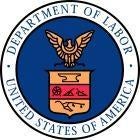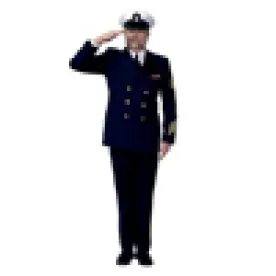On Nov. 11, 1918, a ceasefire signed at Compiègne, France between the Allies and the Germans ended World War I. It also began the annual tradition of honoring those veterans who had sacrificed so much in that war, and those that would follow, first as Armistice Day and then as Veterans Day. The Department of Labor works every day to honor veterans by helping them succeed in the civilian workforce when their time in the armed services comes to end.
How many of our programs and services do you know about? Here, in observance of “the eleventh hour of the eleventh day of the eleventh month,” are 11 things that the department does for veterans:
11: Labor market statistics: The Bureau of Labor Statistics tracks labor market data in various ways to help paint a picture of what jobs are growing and where those jobs are located. We use this data to make sure that our training programs and employment services are tailored to the needs of employers. Its annual employment report on veterans also increases our understanding of the characteristics of veterans in our workforce, showing us what’s working and where we can do better.
10: Employer outreach: Employers know that hiring veterans is not only the right thing to do, but good for business. But where does an employer who wants to invest in her company’s future by hiring veterans go to find them? At approximately 2,500 American Job Centers, specialists connect these employers with veterans in the local community who have the skills the employer needs.
9: Preparing women veterans to succeed: A renewed emphasis on women veterans employment issues began in 2009, when the department saw increasing homelessness among women veterans. This led to the creation of the Women Veterans Initiative, a joint program with the Veterans’ Employment and Training Service and the Women’s Bureau designed to tackle the problem of women veterans unemployment head on. Its mission is to determine the distinct challenges for women veteran employment, identify the department services needed to close the gap and elevate women veterans issues among stakeholders and the public.
8: Apprenticeships: Apprenticeship is on the rise in America, with President Obama calling for doubling the number of apprenticeships in the next five years. That’s because apprenticeships embody the job-driven training strategy that can help our economy grow. For veterans, apprenticeships are a great way to prepare for a new career. Registered Apprenticeship allows veterans to learn a trade and use their GI Bill benefits to receive a tax-free monthly stipend. To help veterans find apprenticeship programs that are right for them, the department has a number of resources where veterans can explore high-skill, good paying job opportunitiesthrough Registered Apprenticeships.
7: Getting homeless veterans back on their feet: The department’s Homeless Veteran Reintegration Program grants are designed to connect veterans with training to help them succeed in civilian careers. This year $36,710,368 was awarded to 156 organizations nationwide to help more than 12,000 veterans. The grants fund a range of supportive services, including job placement, career counseling, life skills and money management mentoring, as well as help in finding housing.
6: My Next Move: My Next Move for Veterans is an interactive tool that helps veterans learn about their career options. The site has tasks, skills, salary information, job listings, and more for over 900 different careers. Veterans can find careers through keyword search; by browsing industries that employ different types of workers; or by discovering civilian careers that are similar to their job in the military. Veterans can also take advantage of the O*NET Interest Profiler, a tool that offers personalized career suggestions based on a person’s interests and level of work experience.
5: Gold Card: The Gold Card provides unemployed post-9/11 era veterans with the intensive and follow-up services they need to succeed in today’s job market. An eligible veteran can present the Gold Card at a local American Job Center to receive enhanced intensive services including up to six months of follow-up. The enhanced in-person services available for Gold Card holders may include:
-
Job readiness assessment, including interviews and testing;
-
Development of an Individual Development Plan (IDP);
-
Career guidance through group or individual counseling that helps veterans in making training and career decisions;
-
Provision of labor market, occupational, and skills transferability information that inform educational, training, and occupational decisions;
-
Referral to job banks, job portals, and job openings;
-
Referral to employers and registered apprenticeship sponsors;
-
Referral to training by WIA-funded or third party service providers; and
-
Monthly follow-up by an assigned case manager for up to six months.
4. Transition Assistance Program: The 2011 “Veterans Opportunity to Work and Hire Heroes Act of 2011” requires, among other things, that separating service-members must attend the Transition Assistance Program. TAP includes the Department of Labor’s three-day employment workshop at hundreds of military installations worldwide for thousands of separating service-members.
For veterans and spouses of service-members might also benefit, the full TAP curriculum is now available online.
3: Protect civilian job rights and benefits for veterans: The Uniformed Services Employment and Reemployment Rights Act protects civilian job rights and benefits for veterans and members of the active and Reserve components of the U.S. armed forces. USERRA provides that returning service-members must be promptly reemployed in the same position that they would have attained had they not been absent for military service, with the same seniority, status and pay, as well as other rights and benefits determined by seniority. Individuals who believe their employment or reemployment rights under USERRA have been violated may file a complaint with VETS online or by submitting a signed complaint form.
2: Hiring fairs: With dynamic partners such as First Lady Michelle Obama and Dr. Jill Biden’sJoining Forces Initiative and the U.S. Chamber of Commerce’s Hiring our Heroes program, we’re providing veterans across the United States with opportunities to connect with employers who are pledging to hire veterans. Hiring fairs are regularly organized throughout the country, where veterans can meet these employers and apply for good jobs (after getting resume and interviewing help from an American Job Center!). Visit the U.S. Chamber of Commerce Foundation to find upcoming fairs near you.
1: Priority of service at American Job Centers: Veterans and other covered persons receive priority of service for all employment and training programs funded directly, in whole or in part, by the department at more than 2,500 American Job centers across the country. The American Job Center network is a single access point for all the resources veterans need to find a good job or connect with training. They also help veterans improve their resumes, and provide tips on networking and interviewing. Disabled and other eligible veterans also receive intensive services from specialists, with the maximum emphasis directed toward serving those who are economically or educationally disadvantaged, including homeless veterans and veterans with barriers to employment. You can find the center closest to you by visiting jobcenter.usa.gov.



 />i
/>i

